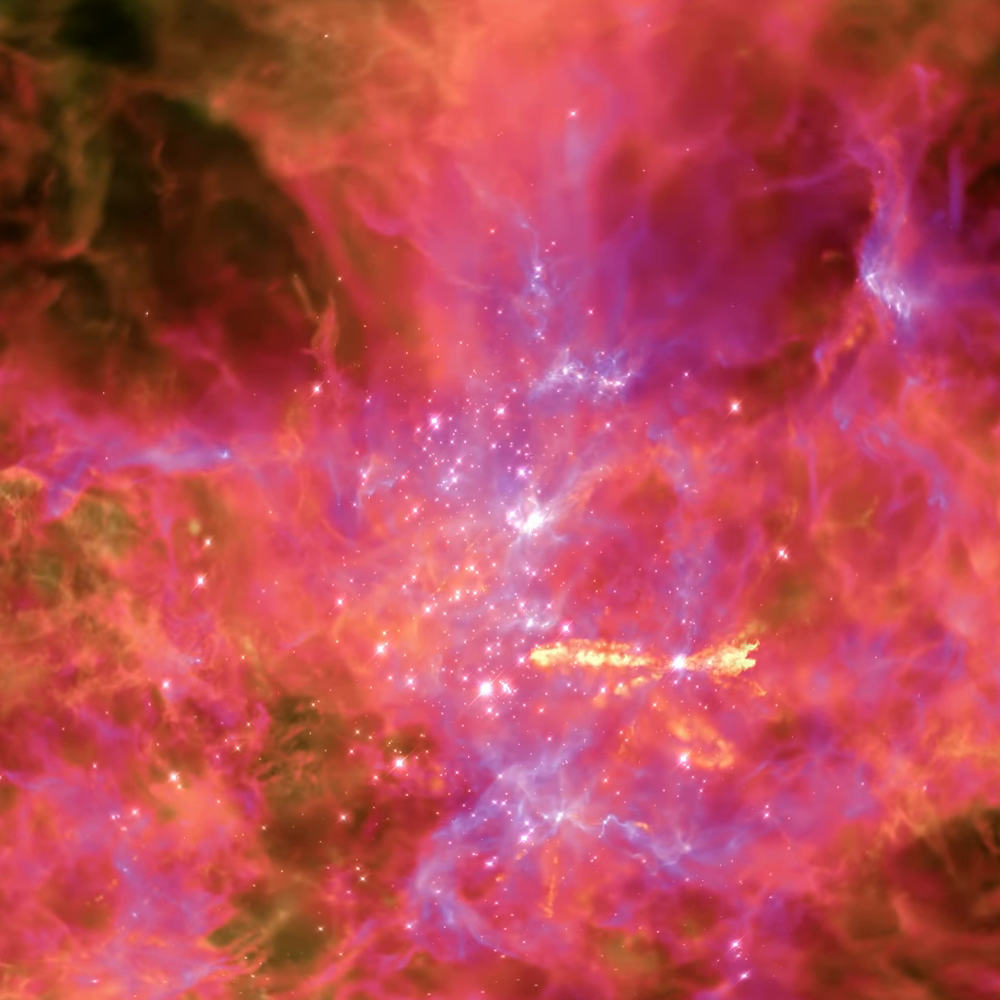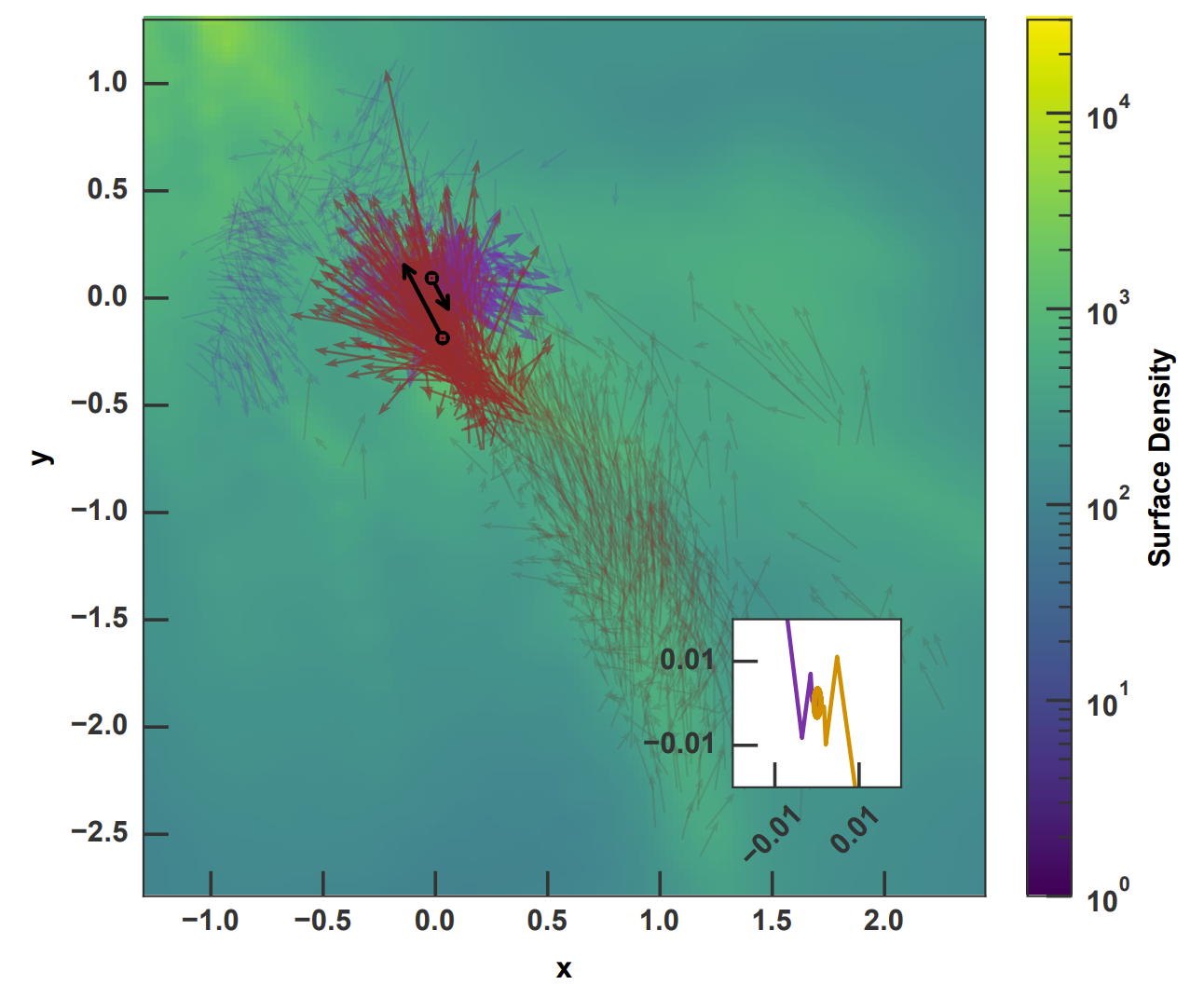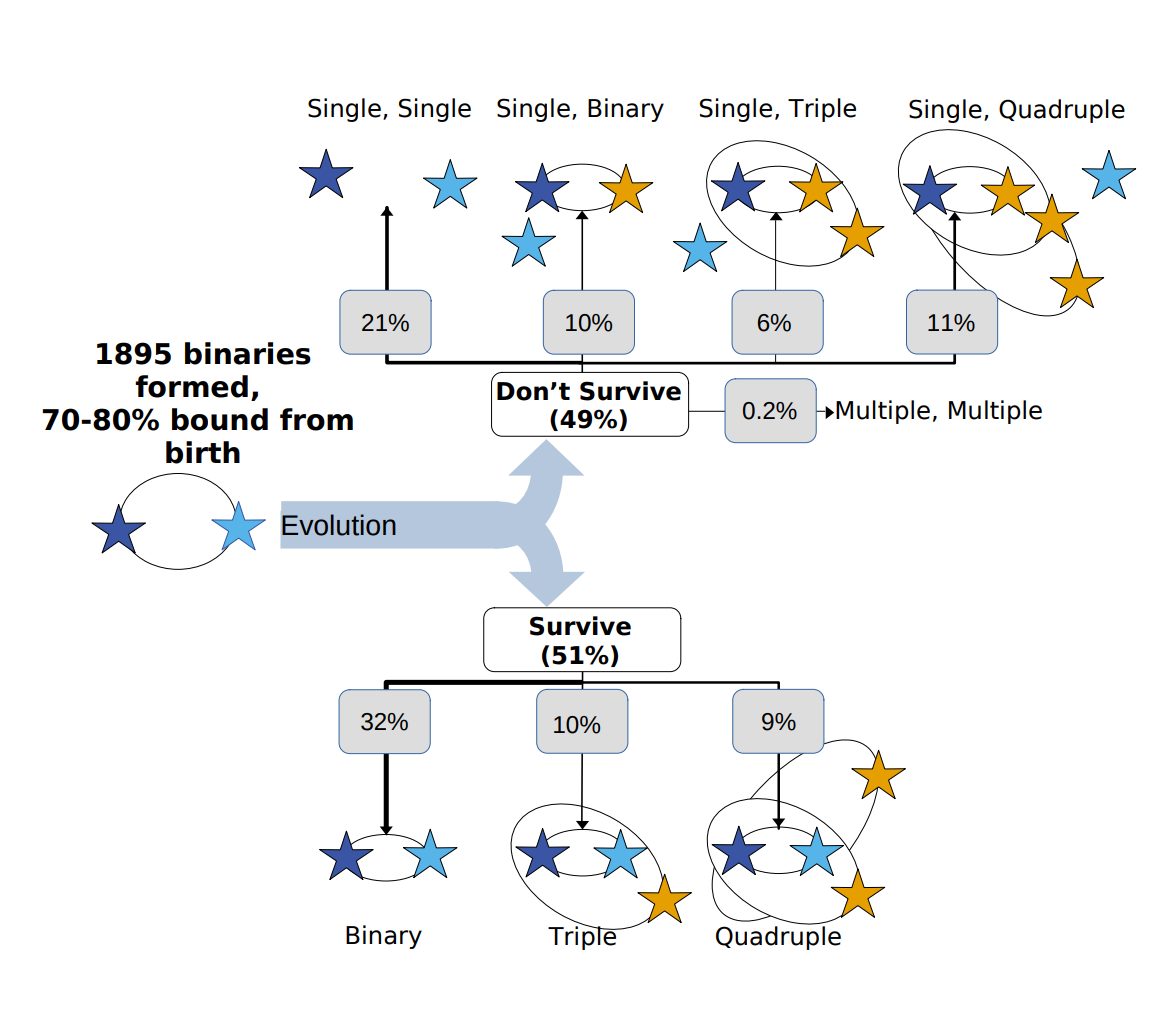Peering into the universe’s dark, hazy cosmos to catch the first glimpses of infant stars has long challenged astronomers. The cloud of dense gas and dust that gives rise to these stellar embryos also conceals them. However, a recent study published by Aleksey Generozov, a research fellow at the Oden Institute for Computational Engineering and Sciences at The University of Texas at Austin working with Stella Offner, professor of astronomy, has pierced through the clouds and illuminated the birth of stars, suggesting that stars begin their lives in small families, bound in a gravitational embrace from the start.
He discovered these results through computer simulations built by the STARFORGE Project, a multi-institutional effort involving Generozov and Offner that seeks to model and visualize star formation. The movies produced by the STARFORGE team are mesmerizing, in which a spherical gas cloud collapses under its own gravity while stars pop up throughout it. However, beyond their visual appeal, the simulations are scientifically unprecedented. Offner comments, “The STARFORGE simulations are an excellent sandbox to test binary formation theories, since they are currently the only models that follow the formation of thousands of stars and include all key physics—turbulence, magnetic fields, radiation, and stellar feedback."
In the Nature Astronomy study, “Low Mass Stellar Binaries are Bound from Birth,” Generozov mined a suite of these STARFORGE models to observe binary stellar systems. He found that for the vast majority of small stars in binary systems, the stars are already bound before the second star flickers on. He remarks, “This means that binaries are really evolving and accreting together,” reshaping how astronomers previously understood these multiple-star systems.


